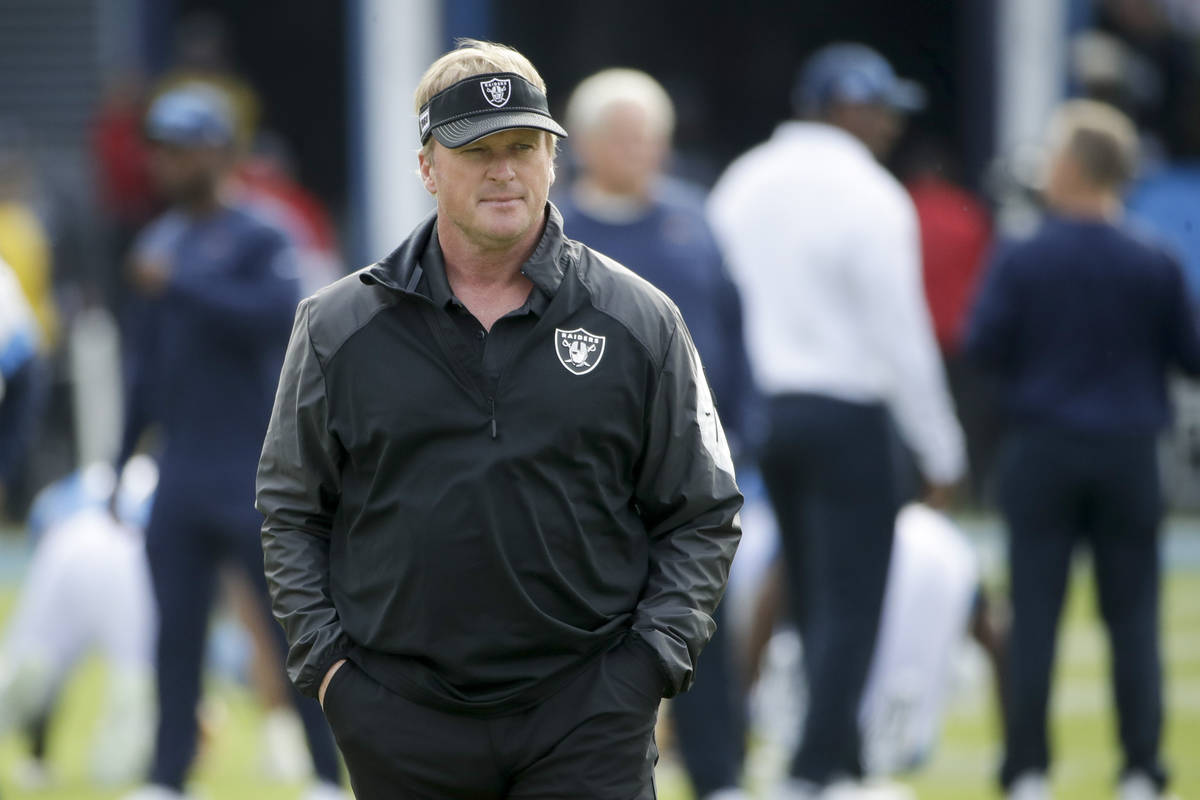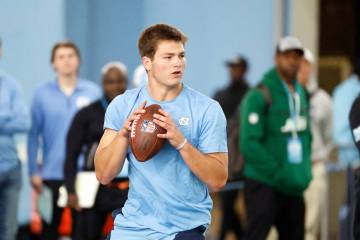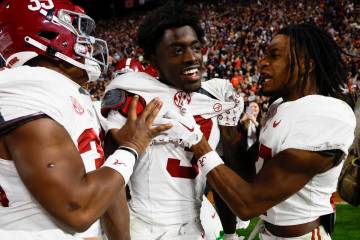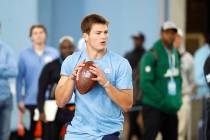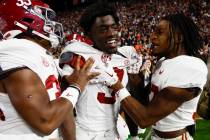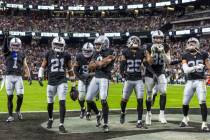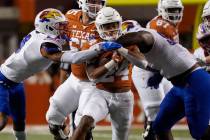Raiders need to make a major leap in red zone production
Absent the ability to see his team on a football field, it’s impossible for Raiders coach Jon Gruden to fully appreciate how the offseason addition of some prominent offensive players will lead to improved efficiency in the red zone.
Let alone explain in detail how the speed and explosiveness of first-round pick Henry Ruggs and the versatility of third-round pick Lynn Bowden will translate to more production inside the opponents’ 20-yard line. And in turn, push the Raiders’ scoring average from the 18.8 points per game of the last two years to the 24-plus points they need to be a viable playoff contender.
“I’m not going to make any predictions about Ruggs or Bowden until I see them live over the next few weeks,” Gruden said.
The realities of COVID-19 mean the Raiders won’t take the field for football-specific work for another week, at least.
As a result, it will be a while before Gruden can get a feel for the impact rookies such as Ruggs, Bowden and big-bodied receiver Bryan Edwards will have on key parts of the Raiders’ offense.
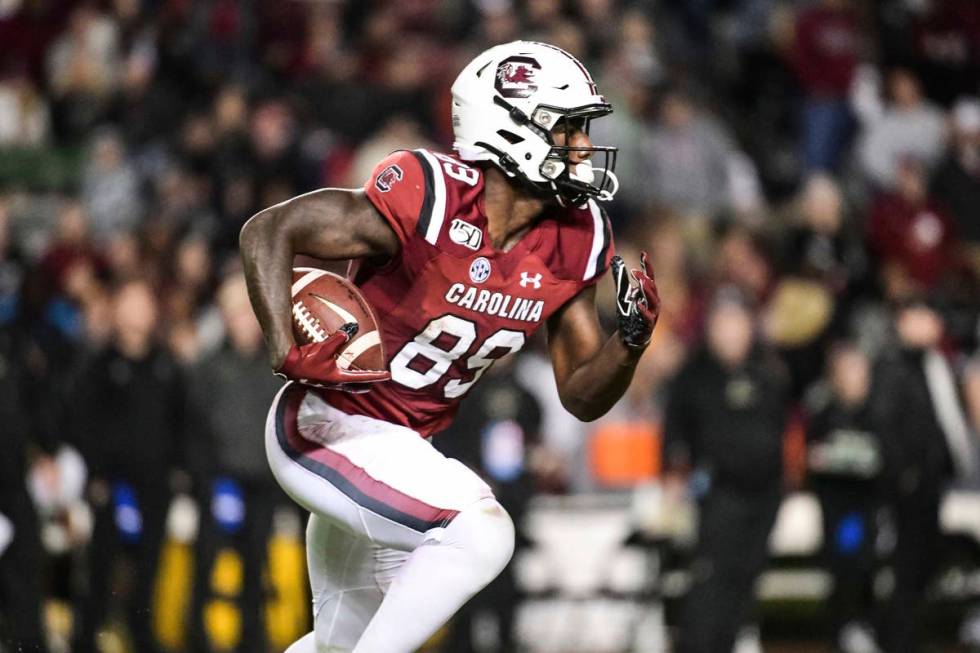
Like their 52.8 red zone touchdown percentage, which ranked 22nd in the NFL. Or the 1.8 points they averaged on their 160 drives, which was 19th in the league. But mostly, he’s determined to improve the Raiders’ 24th-ranked scoring offense, nudging it closer to the top 10 in the NFL.
Gruden will acknowledge that he thinks the Raiders are positioned to make a big leap forward offensively. “I’m not going to say much more than that,” he said.
At least not until he can see all the new pieces in place and how they function alongside quarterback Derek Carr, who is entering his third season in Gruden’s system. Until then, it all remains just a figment of Gruden’s football imagination, which was active during the lengthy COVID-19 lockdown.
Gruden knows improvement in the red zone is also dependent on his play-calling and some much-needed pixie dust delivered by the mythical powers in charge of injuries.
While the Raiders’ offensive line showed dramatic improvement from 2018 to 2019 — entering 2020, Pro Football Focus ranks it the best in the NFL — the unit lost 15 games from its starting group to injury. By the last month of the season, it was a virtual M*A*S*H unit, with backups manning positions up and down the line.
Meanwhile, wide receiver Tyrell Williams was beset by foot issues almost all season and dynamic rookie running back Josh Jacobs missed three games over the last four weeks with an injured shoulder.
That partially explains the Jekyll and Hyde offensive swings the Raiders experienced. Consider that over the first nine games, the Raiders averaged a healthy 23.1 points per game, including a run of six straight games of 24 or more points, only to average 15 points per game over the final seven games when a young roster got pushed to the limit by injuries.
Carr bore the brunt of the criticism for the dramatic turn for the worse, but the injury factor can’t be discounted.
“It helps when Trent Brown plays. It helps when Gabe Jackson is healthy,” Gruden said of two starters on the offensive line who missed time last season because of injury. “It helps when we have Josh Jacobs back there.”
As for the role he played in the red zone struggles, Gruden points to the handful of times the Raiders were turned back at the foot of the goal line and denied points that could have swung games the Raiders’ way.
“We stunk last year, I stunk inside the 1-yard line,” Gruden said. “That will really help our offense if I can call some better plays and give these guys a chance to poke it in from inside the 2- or 3-yard line.
“We got stuffed twice in Green Bay. We got stuffed against Denver. We got stuffed against Tennessee. We got stuffed too many times down inside the 2-yard line. That’s all my fault.”
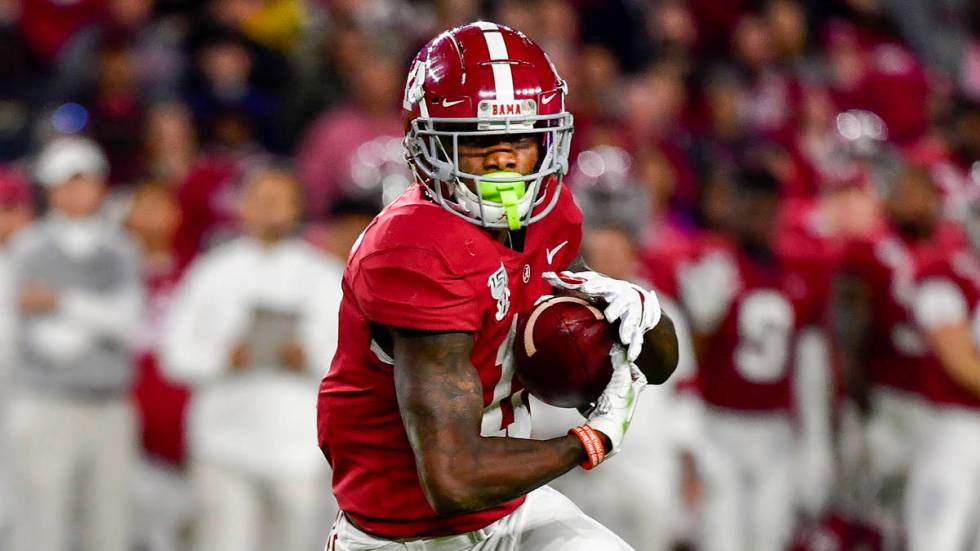
Ruggs, Bowden and perhaps even Edwards can certainly help, though, as each brings a needed dynamic to the equation.
The speed and explosiveness of Ruggs is a commodity the Raiders have lacked for years, and Gruden will tap into it all over the field in the hope of creating more big plays. At Alabama, 24 of Ruggs’ 98 catches went for touchdowns. He averaged 17.5 yards per catch. He is a threat no matter where the Raiders him line up, even in the red zone.
“Whatever my job is, whether it’s to catch a screen pass, block for a screen pass or if it’s just to run down the field so somebody can look at me, that’s what I’m going to do,” Ruggs said.
Bowden and Edwards also figure to be red zone threats.
Bowden, who had to play quarterback over his last eight games at Kentucky, could have an immediate impact in situationally driven packages designed to tap into his ability as a runner, pass catcher and thrower. Much like the New Orleans Saints use Taysom Hill, Bowden could line up at quarterback in the shotgun to pose a threat as a runner and passer. That will be a valuable asset near the goal line.
The possibilities are endless — even with Edwards, a playmaker whose tenacity and size make him an ideal red zone weapon able to fight for 50-50 balls.
Gruden has thought about every tantalizing opportunity. Like an endless loop, it’s played over and over in his head.
Now he just needs to actually see it in person.
Contact Vincent Bonsignore at vbonsignore@reviewjournal.com. Follow @VinnyBonsignore on Twitter.




